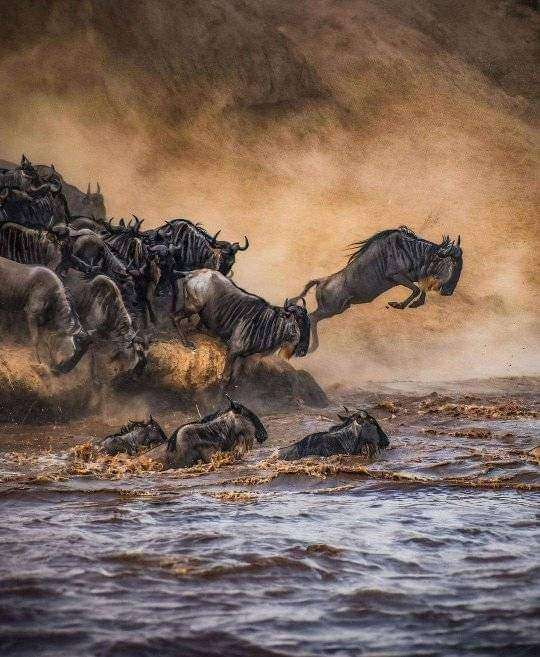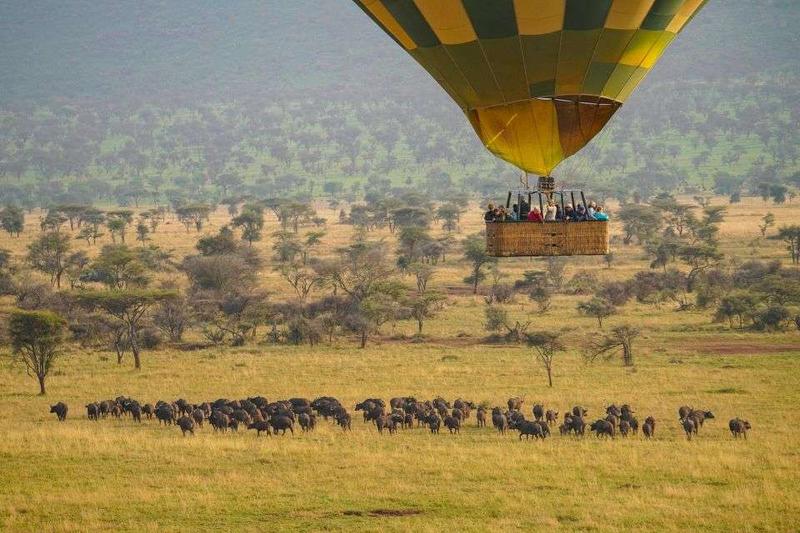
Sorry, we don't have any places yet
You may also be interested:

Removed from Unnamed collection
Douala-Edea Wildlife Reserve 
Spanning an impressive 400,000 acres as of the year 2000, the Douala-Edéa Wildlife Reserve is a haven for nature lovers. This lush sanctuary is home to 80% tropical lowland equatorial forests and 15% Atlantic mangrove, not to mention the serene beaut
Map

Removed from Unnamed collection
Terra Kulture 
There's truly only one place that can boast of being Nigeria's Cultural Center, and that's the remarkable Terra Kulture. This arts, entertainment, and educational hub has been leading the charge in transforming Nigeria's cultural scene for over ten y
Map

Removed from Unnamed collection
TINUBU SQUARE 
Madam Tinubu, a legendary Nigerian businesswoman and fervent patriot, left an indelible mark on Lagos. Her legacy shines brightly at Tinubu Square, which proudly bears her name. This bustling landmark is nestled in the heart of Lagos Island, surround
Map

Removed from Unnamed collection
Old Colonial Houses 
These houses showcase an intriguing blend of Brazilian and British architectural styles, and you can find them primarily in the vibrant neighborhoods of Ebute-Metta, Yaba, and Lagos Island. Walking through these streets feels like stepping back in ti
Map

Removed from Unnamed collection
Osu Castle 
Osu Castle, originally called Christiansburg, has a fascinating history dating back to 1659 when it was constructed and named in honor of King Christian V of Denmark. Over the centuries, this formidable fortress saw its fair share of power struggles,
Map

Removed from Unnamed collection
Kwame Nkrumah Mausoleum 
On High Street stands a magnificent monument dedicated to Ghana's first President, Osagyefo Dr. Kwame Nkrumah. This tribute honors a remarkable Pan-Africanist who guided the nation to independence in 1957. It's a place steeped in history and pride, w
Map

Removed from Unnamed collection
Ghana National Museum 
In March 1957, during the Independence celebration, the National Museum was officially opened by the Duchess of Kent. Nestled on Barnes Road near the Accra Psychiatric Hospital, this museum is a treasure trove of Ghana's historical and cultural gems,
Map

Removed from Unnamed collection
Saint Michael's Fortress 
Designated a UNESCO World Heritage Site in 1996, São Miguel Fort is a historical gem nestled in the heart of Luanda. Built in 1576 by Paulo Dias de Novais, the fort is a testament to the city's early foundations. By 1627, it had evolved into the admi
Map

Removed from Unnamed collection
Museu Nacional de Antropologia 
Nestled in the heart of Angola, the National Museum of Anthropology is a treasure trove for anyone curious about the country's rich history and culture. With an impressive collection of over 6,000 objects, the museum showcases an array of arts, masks
Map

Removed from Unnamed collection
Miradouro da Lua 
Just 40 kilometers south of Luanda, you'll find the breathtaking Moon Viewpoint. This stunning landscape, carved over the years by the forces of rain and erosion, bears an uncanny resemblance to the moon's surface. It's like stepping into another wor
Map

Removed from Unnamed collection
They nice places you can visit to have a good experience. We can take you there safe and give you a great tour . 
21 September 2024
Here are some of our tour activities we give to our guests.
Map

Removed from Unnamed collection
Musee National 
Nestled in the heart of the Le Plateau area, you'll find a charming museum that's a treasure trove of Ivorian art. It showcases an impressive collection that truly captures the spirit of the region. The exhibits feature stunning human and animal stat
Map

Removed from Unnamed collection
Musee Municipal d'Art Contemporai 
The museum in Cocody is a brilliant initiative by the city council, which got its start in November 1993. It's a cultural treasure trove, showcasing a permanent exhibition filled with modern and contemporary works by both Ivorian and other African ar
Map

Removed from Unnamed collection
Parc du Banco 
Nestled on the outskirts of the bustling city, the National Forest Reserve sprawls over 7,500 acres of lush, tropical rainforest. While spotting wildlife can be a bit of a challenge, the reserve offers a network of scenic walking trails, a tranquil l
Map

Removed from Unnamed collection
Bunce Island 
Nestled in the Sierra Leone River, just a few miles north of bustling Freetown, Bunce Island stands as a poignant reminder of a dark chapter in history. Between the late 1500s and 1807, this small island was the epicenter of one of West Africa's most
Map

Removed from Unnamed collection
Tacugama Chimpanzee Sanctuary 
Nestled just 30 minutes from Freetown, the Tacugama Chimpanzee Sanctuary is a hidden gem just outside the charming Regent Village. Tucked away on the Regent/Bathurst mountain road, this sanctuary not only provides a haven for orphaned and rehabilitat
Map

Removed from Unnamed collection
National Railway Museum 
Exploring the National Railway Museum is a fascinating experience, even if trains aren't your usual obsession. This gem in Clinetown offers a captivating collection of restored locomotives that will ignite your curiosity. You can marvel at the grande
Map

Removed from Unnamed collection
Fortress of Ghat 
Nestled in southern Libya, Ghat is a captivating Tuareg oasis that whispers tales of ancient traditions and vibrant cultures. It's perched near the Algerian border, right at the foot of the mysterious Tadrart Acacus. The old village of Ghat is a maze
Map

Removed from Unnamed collection
Okavango Delta, Botswana 
13 August 2024
Experience Nature in a different way. Vast Flora and fauna. The beauty of the Okavango Delta, wild animals in their natural habitat. Luxurious camping and life changing moments in the delta
Map

Removed from Unnamed collection
serengeti Tour 
26 November 2024
Explore the Big Five and Great Migration in Masai Mara's iconic landscapes. Discover Serengeti’s vast plains, home to lions, leopards, and wildebeests. Experience Ngorongoro Crater's wildlife, including rhinos and flamingos. See elephants and lions w
Map

Removed from Unnamed collection
Masai Mara Tour 
25 November 2024
Ol Pejeta Conservancy: Visit East Africa’s largest black rhino sanctuary and the Sweetwaters Chimpanzee Sanctuary. Lake Nakuru National Park: Spot flamingos, rhinos, and other wildlife amidst stunning landscapes. Masai Mara National Reserve: Witness
Map

Removed from Unnamed collection
masai mara migration 
25 November 2024
Explore the iconic Masai Mara, home to the Big Five and the famous Great Migration. Witness thousands of flamingos and other birdlife at Lake Nakuru and Lake Bogoria. Enjoy a boat ride on Lake Naivasha, spotting hippos and diverse wildlife. Discover
Map

Removed from Unnamed collection
Samburu Tour 
26 November 2024
Explore the Big Five in Masai Mara with game drives and a balloon safari. Visit Lake Naivasha for hippo sightings and a serene boat ride. See flamingos and geothermal springs at Lake Bogoria. Spot rare species like Grevy’s zebras in Samburu. Experien
Map

Removed from Unnamed collection
Lake Naivasha Trip 
27 November 2024
Game Drives in Masai Mara: Witness the incredible wildlife, including the Big Five, in one of the world’s most famous safari destinations. Ol Pejeta Conservancy: Explore this unique reserve, home to endangered species like the northern white rhino an
Map

Removed from Unnamed collection
lake nakuru safari 
25 November 2024
Witnessing the Great Migration in the Masai Mara Game drives for spotting the Big Five: lions, elephants, buffaloes, leopards, and rhinos Exploring the diverse birdlife around Lake Nakuru Enjoying stunning sunsets and sunrises over the African savann
Map

Removed from Unnamed collection
Lake Nakuru National Park 
Nestled in the heart of the Great Rift Valley, Lake Nakuru National Park offers a mesmerizing escape into nature's embrace. This stunning park, encircled by lush woodlands and sprawling grasslands, is a haven for those seeking a rich ecological exper
Map

Removed from Unnamed collection
Khami Ruins 
Khame Ruins are perhaps the best-kept secret among Zimbabwe's five World Heritage sites. Just a short 22-kilometer drive from Bulawayo, Khame once served as the capital of the Torwa state between 1450 and around 1683, following the abandonment of the
Map

Removed from Unnamed collection
Bulawayo National Art Gallery 
Tucked away in one of Zimbabwe's most iconic monuments, the National Gallery in Bulawayo is a treasure trove of invigorating and thought-provoking exhibitions. It resides in the historic Douslin House, a building that has stood for over a century. Th
Map
















